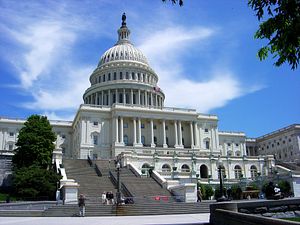The Diplomat author Mercy Kuo regularly engages subject-matter experts, policy practitioners, and strategic thinkers across the globe for their diverse insights into U.S. Asia policy. This conversation with Seth Cropsey – senior fellow and director of the Center for American Seapower at the Hudson Institute in Washington D.C. ̶ is the 299th in “The Trans-Pacific View Insight Series.”
Briefly explain the “Arm Taiwan Act” (ATA) legislation and how it relates to the Taiwan Defense Act (TDA) of 2020 and Taiwan Relations Act (TRA) of 1979.
The ATA has a similar theme to the 2020 TDA. Both are much more explicit than the TRA. The TRA neither identifies a specific threat to Taiwanese sovereignty nor specifies the capabilities that the U.S. should supply to Taiwan. Both the TDA and ATA do so. The ATA, however, is more robust than the TDA. The TDA did identify China as the primary threat to Taiwan and proposed that the DOD [Department of Defense] report consistently direct its efforts to prevent a Chinese fait accompli against Taiwan. But the ATA proposes a specific response mechanism, the provision of asymmetric capabilities to deter a Chinese offensive, providing a level of specificity to U.S. policy previously absent.
Analyze the probability of ATA’s passage in the U.S. Congress.
The central question is whether American legislators view China as a military threat. [Bill sponsor] Josh Hawley’s support for Donald Trump’s contention that he had won the 2020 presidential election may have undermined his political credibility in the Senate. However, the fundamental logic behind the ATA is sound, much like the logic behind the TDA was. An essential question is whether Hawley’s personal reputation will preclude widespread Democratic support for the ATA. But while the bill may need a different front man, no indication exists that another Republican will step forward.
What would be the potential impact of ATA’s passage on China’s leadership, cross-strait relations, and U.S.-China relations?
China’s leadership would view this bill as a clear signal of American seriousness. By identifying a specific response to Chinese strategy, the ATA demonstrates the United States’ recognition of the China threat’s nature and provides a coherent response to it. China would retaliate, escalating diplomatic and economic pressure on Taiwan for fear of the ATA being the first step in a broader diplomatic-political arrangement between Taiwan, the U.S., and the United States’ Pacific allies. China likely would also increase its pressure on U.S. forces in the Indo-Pacific, raising the costs of any U.S. support for Taiwan.
What signal would passage of ATA send to Taiwan?
The ATA would demonstrate, first, that the U.S. takes Taiwan’s defense seriously. However, second, it would indicate that the U.S. remains uncertain about a commitment to aiding Taiwan before a conflict, given that the ATA hinges specifically upon Taiwanese strategy.
Assess key geopolitical, economic, and security factors behind U.S. policymakers’ decision making on ATA legislation and implications for U.S. defense policy.
The core questions here are entirely geopolitical. The defense of Taiwan, and Chinese designs against the island-republic, have follow-on economic implications. But China’s desire to absorb Taiwan is derived fundamentally from geopolitical objectives. Without possession of Taiwan, it cannot monopolize the First Island Chain, nor break out into the Philippine Sea and confront the U.S. and its allies more directly. In turn, the best rationale for defending Taiwan is, again, geopolitical: Chinese absorption of Taiwan would make it impossible for the U.S. to contain Chinese expansion absent a multi-year great-power war with a clear potential for nuclear escalation.
The central question for the ATA is operational-strategic. The ATA has identified a gap between Taiwanese strategy and force structure. Taiwan continues to prioritize and purchase high-end platforms like conventional air-superiority fighters despite the PLA’s overwhelming conventional advantages. The ATA would seek to correct this, shifting Taiwan’s defense strategy towards an asymmetric approach.
However, the ATA will have little deterrence value unless the U.S. couples it with clear Taiwan-American military engagement. U.S. forces in the region understand that they will be called upon to intervene in a cross-strait conflict. Yet it remains entirely unclear how the U.S. will intervene, with what capabilities, and to what end. An asymmetric approach is far more prudent for Taiwan given its relative disadvantages. But it cannot hold out on its own without clear American assistance, either in preventing invasion or fighting on after an invasion – indeed, a Pacific War will be much longer and broader than expected.
































